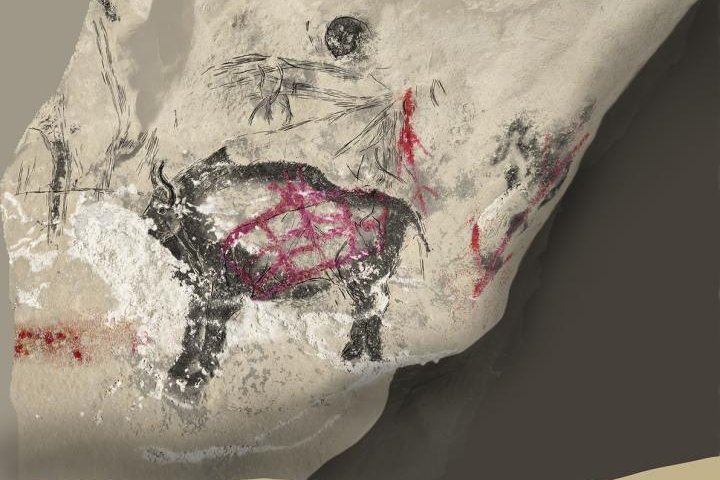A reproduction of late ice age cave painting reveals the relative of the modern Europena bison, a hybrid bison-cattle species. Photo by Carole Fritz
ADELAIDE, Australia, Oct. 18 (UPI) -- An unusual animal can be found among ice age cave art -- a hybrid bison-cattle creature. A number of fossils hinted at the presence of a unique bison species, but until recently, scientists were unable to confirm its existence.
New DNA analysis proves the hybrid species wasn't simply a figment of an artist's imagination. A unique bison-cattle hybrid species roamed Europe during the last glaciation period, between 110,000 and 12,000 years ago.
The hybrid species was the result of mating between the extinct Aurochs, the ancestor of modern cattle, and the ice age steppe bison. The hybridized offspring became a new species and the ancestor of the modern European bison, or wisent, which still survives today in small herds living on protected grasslands in Poland, Belarus and elsewhere.
"Finding that a hybridization event led to a completely new species was a real surprise -- as this isn't really meant to happen in mammals," Alan Cooper, director of the Australian Centre for Ancient DNA at the University of Adelaide, explained in a news release. "The genetic signals from the ancient bison bones were very odd, but we weren't quite sure a species really existed -- so we referred to it as the Higgs Bison."
Until now, researchers thought the steppe bison was the only bison species roaming the grasslands of Europe and Eurasia during the last ice age. But radiocarbon dating and DNA analysis of several ancient bison bones suggest the species shared territory with a hybrid relative.
Researchers published their novel findings in the journal Nature Communications.
"The dated bones revealed that our new species and the Steppe Bison swapped dominance in Europe several times, in concert with major environmental changes caused by climate change," said lead study author Julien Soubrier, a researcher at the University of Adelaide. "When we asked, French cave researchers told us that there were indeed two distinct forms of bison art in Ice Age caves, and it turns out their ages match those of the different species. We'd never have guessed the cave artists had helpfully painted pictures of both species for us."















